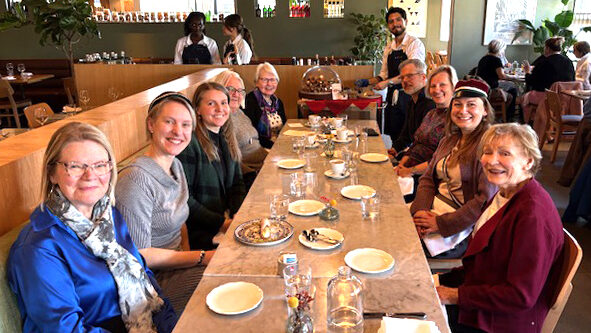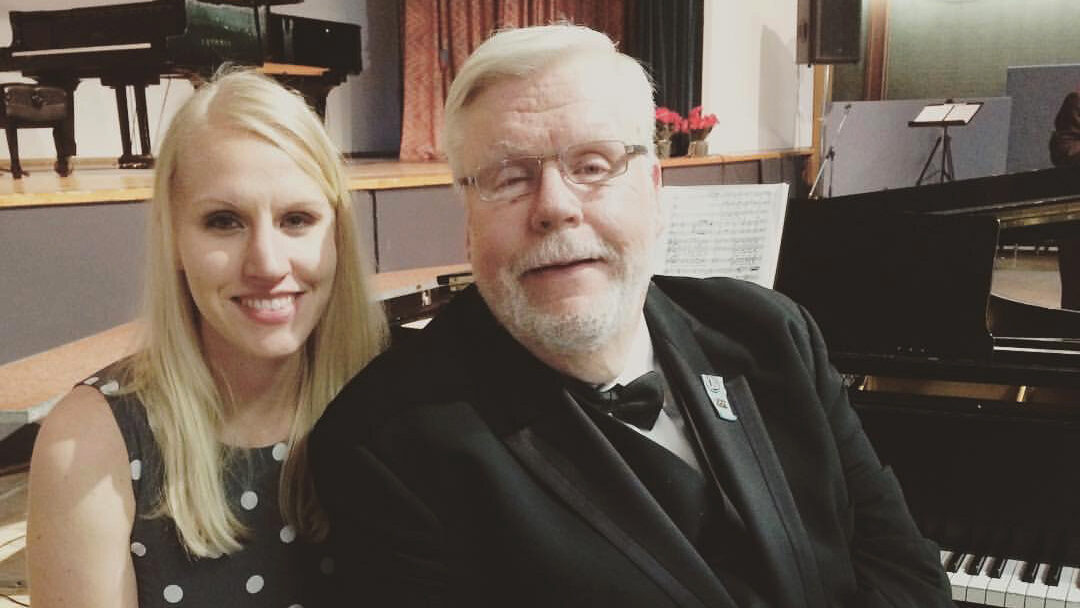While visiting Dublin, I met an Italian named Michelangelo—a twenty-six-year-old doing his PhD in quantitative finance at University College Dublin—who, after chatting with me, revealed his passion for Estonia. Since his first visit in 2019, he's returned every year (often more than once), fully immersing himself in the culture. From learning the language in Tartu to bringing two kilograms of kama to Italy, Michelangelo feels a genuine connection to the country. Find our conversation about his love for Estonia below.

Natalie: What drew you to Estonia?
Michelangelo: I have always been fascinated with the Baltic countries. Back in 2019, I was an Erasmus student and had the chance to visit. I fell in love with all three countries, but especially Estonia. I returned to Italy and told my brother he should come with me again. We returned the following year to go to Tallinn, which was terrific, but we wanted a more genuine Estonian summer experience, so we went to the suve (summer) capital, Pärnu. We made some Estonian friends, which was really important because this way, we were not just tourists anymore, but felt more attached to Estonia and gained a deeper understanding of Estonian life, culture, music, and traditions.
There is a word—rahulik (peaceful)—which resonates with me. I don't have any Estonian blood, and I am not a citizen, but I feel like I really vibe with the people, even in silence.
(Michelangelo)
Since then, we've been travelling to Estonia at least twice a year. You may wonder, as an Italian, why Estonia? Among my friends, it's quite controversial. Everyone visits places like Ibiza or stays in Italy for a vacation. But it's a feeling I cannot describe; it's more spiritual, intangible. I fell in love with the authenticity of the Estonian soul, the landscapes, the beaches of Pärnu, the windmills of Saaremaa, Muhu, and the streets of Tartu. There is a word—rahulik (peaceful)—which resonates with me. I don't have any Estonian blood, and I am not a citizen, but I feel like I really vibe with the people, even in silence. When I am walking through the forest, I feel peace. But since I am not a poet or a painter, this feeling is hard to describe.
Natalie: What's it been like learning Estonian?
Michelangelo: Ma räägin eesti keelt natukene. My Estonian is very basic, but I am trying. As an Italian, the language is very hard. It's completely different. There are so many grammatical cases. It's a mess. But I figured that since I am travelling to Estonia so much, it would be good to learn the language to better connect with people and the culture, and also to show gratitude. I bought a book in Kuressaare that I study every day on the train to work back home in Italy. Last summer, I decided to join the summer language program at Tartu. I got to the A2 level, so I'm still a beginner. It was amazing and super helpful to get more in touch with the culture and people.
Natalie: Italian culture is known for being extroverted and expressive, which seems very different from Estonia's general quiet and reserved nature. How has it felt to immerse yourself in that different approach?
Michelangelo: I know I am loud. I love to speak. I cannot help it, I am Italian, after all. Actually, once, I was in a restaurant and was being too loud. A guy approached me and asked why I was so loud. So, when I am in Estonia, I make an effort to be respectful. This is what's great about cultural exchange: I am learning a lot! In Italy, there are stereotypes about Nordic and Northern countries, that they are sad and boring. But that's not true! In Italy, it's normal to start chatting with a stranger and be loud and extroverted, but that doesn't necessarily mean we are happier. In Estonia, there's a layer of ice you need to break with people, but after that, you find that Estonians are friends you can trust; they are sincere and deep and will always help you if you need it.
This summer, I brought two kilograms of kama from Estonia back to Italy and my parents were so confused… but for me, it's perfect for breakfast.
(Michelangelo)
Natalie: As an Italian, what do you think of Estonian food?
Michelangelo: It's a controversial topic. Italians care about food a lot. The stereotype is that we think Italian food is the best and are picky with other cuisines. But I like Estonian food! I like seafood, herring, and vürtsikilud (spicy sprats). I love rye leib (bread). The desserts are amazing—kohuke (cottage cheese dessert) changed my life. I buy it whenever I see it. I also love kama (a flour-based snack)! This summer, I brought two kilograms of kama from Estonia back to Italy and my parents were so confused… but for me, it's perfect for breakfast. It's easy to make and full of good nutrients. I also love verivorst! The best thing ever is going to saun and having a vorst and a beer after. My favourite beers are A. Le Coq and and Must Nunn. I am always open to trying new things!
If Estonia can spark passion in someone with no Estonian roots, imagine what it can reignite in you. Stay connected to your community today by reading more Eesti Elu.
Responses have been edited for clarity and length.
This article was written by Natalie Jenkins as part of the Local Journalism Initiative.


